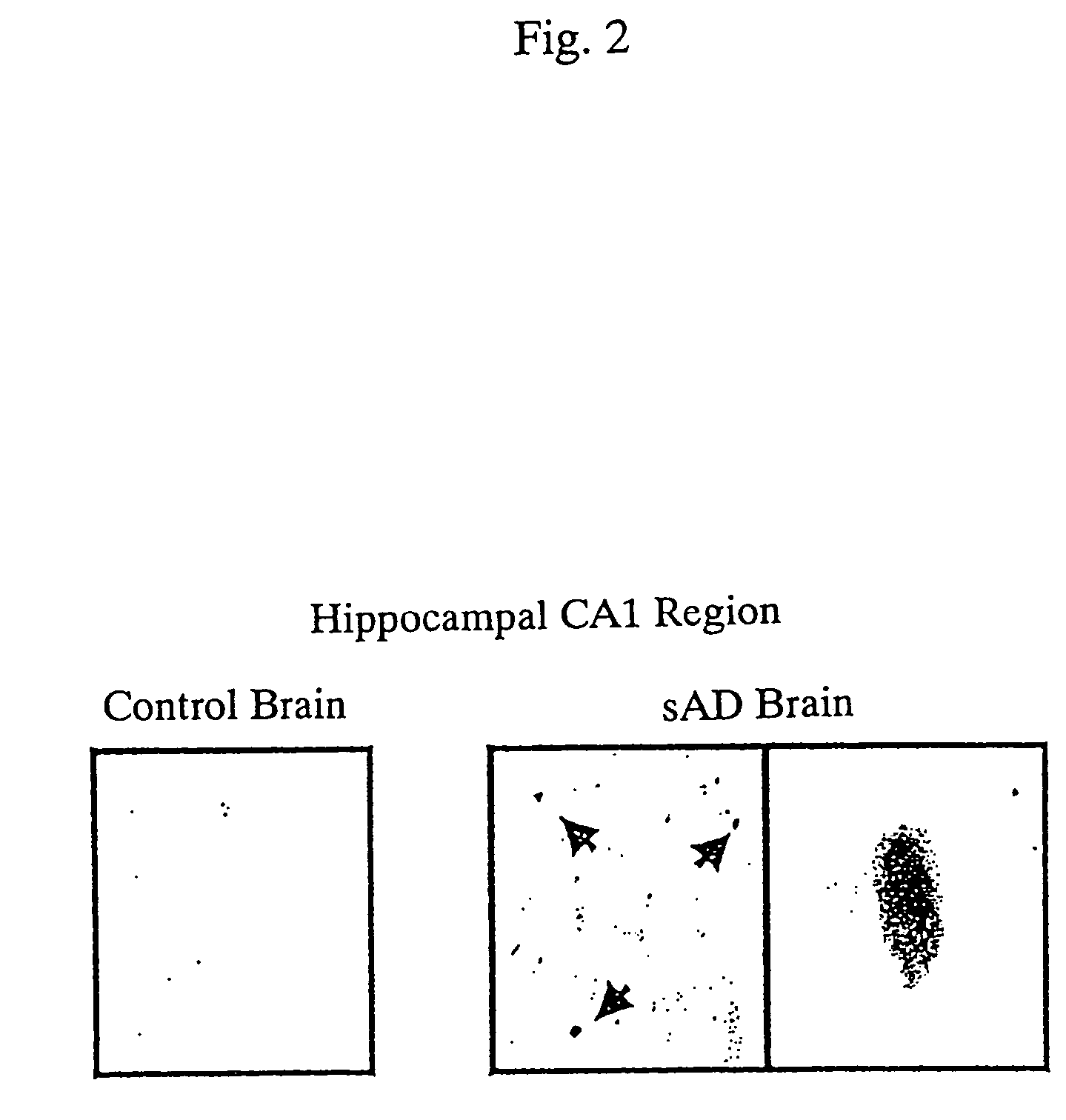Nucleic acid participating in the formation of presenilin-2-gene exon 5-defective splicing variant
a gene exon 5 and mutant technology, applied in the field of nucleic acid, can solve the problems of insufficient knowledge of the mechanism of ps2v generation and the incidence of diseas
- Summary
- Abstract
- Description
- Claims
- Application Information
AI Technical Summary
Benefits of technology
Problems solved by technology
Method used
Image
Examples
experimental example 1
Cell Culture, Hypoxic Stimulation and Transient Transfection
[0141]According to a literature by Sato et al. [Sato N. et al., J. Biol. Chem., 276, 2108-2114 (2001)], cell culture and hypoxic stimulation were carried out in the following manner.
[0142]Human neuroblastoma SK-N-SH cells were cultured in 5% CO2 at 37° C. in αMEM (manufactured by GIBCO BRL) containing 10% fetal bovine serum. When the above cells achieved confluence in a 176.6 cm2 culture plate, the serum-containing α-MEM in the culture was exchanged with serum-free αMEM. The culture obtained after medium exchange was further cultured for 4 hours.
[0143]HEK-293T Cells and HeLa cells were cultured respectively in 5% CO2 at 37° C. in a Dulbecco's minimum essential medium (manufactured by GIBCO BRL) containing 10% fetal bovine serum. When each of the above cells achieved confluence in a 176.6 cm2 culture plate, the serum-containing Dulbecco's minimum essential medium in the culture was exchanged with a serum-free Dulbecco's mini...
experimental example 2
Preparation of Total RNA and RT-PCR
[0146]According to literature by Sato et al. [Sato N. et al., J. Neurochem., 72, 2498-2505 (1999)], preparations of total RNAs from neuroblastoma SK-N-SH cells, HEK-293T cells and HeLa cells under various stresses, and RT-PCR were carried out in the following manner.
[0147]Total RNAs were extracted and purified from SK-N-SH cells and HEK-293T cells under normoxia conditions, upon exposure to hypoxia, or at the time of overexpression of HMG-I, by using an RNeasy total RNA kit (manufactured by Qiagen) according to manufacture's instructions.
[0148]Then, the resulting total RNA and a mouse molony leukemia virus reverse transcriptase (manufactured by Promega) were used, to perform reverse transcription at 42° C. for 1 hour. Subsequently, using the resulting reaction product as a template, nested PCR was carried out. A thermal profile of PCR is 30 cycles, wherein one cycle consists of reactions at 95° C. for 30 seconds, 60° C. for 30 seconds and 72° C. fo...
experimental example 3
Preparation of Nuclear Extract
[0150]According to a modified method of a method by Shreiber et al. [Yoneda, Y. et al., Neuroscience, 90, 519-533 (1999)], a nuclear extract was prepared in the following manner.
[0151]All of the buffer and other solutions used were sterilized each time prior to use by filtration with Steritop (manufactured by Millipore) having a pore size of 220 nm.
[0152]Unless otherwise specified, each cell construct was homogenized at 2° C. in 50 volumes [315 μl / plate] of 10 mM HEPES-NaOH buffer (pH 7.9) containing 10 mM KCl, 1 mM EDTA, 1 mM EGTA, 5 mM dithiothreitol (DTT) and 1 mM (p-amidinophenyl)methanesulfonyl fluoride (PMSF).
[0153]Then, 10% Nonidet P-40 was added at a final concentration of 0.6% to the resulting homogenate. The resulting mixture was centrifuged at 15000 rpm for 5 minutes. Then, the resulting pellet was suspended in 10 volumes [0.1 ml] of 20 mM Tris-HCl (pH 7.5) containing 400 mM KCl, 1 mM EDTA, 1 mM EGTA, 1 mM DTT and 1 mM PMSF, and then cooled o...
PUM
| Property | Measurement | Unit |
|---|---|---|
| thickness | aaaaa | aaaaa |
| pH | aaaaa | aaaaa |
| temperatures | aaaaa | aaaaa |
Abstract
Description
Claims
Application Information
 Login to View More
Login to View More - R&D
- Intellectual Property
- Life Sciences
- Materials
- Tech Scout
- Unparalleled Data Quality
- Higher Quality Content
- 60% Fewer Hallucinations
Browse by: Latest US Patents, China's latest patents, Technical Efficacy Thesaurus, Application Domain, Technology Topic, Popular Technical Reports.
© 2025 PatSnap. All rights reserved.Legal|Privacy policy|Modern Slavery Act Transparency Statement|Sitemap|About US| Contact US: help@patsnap.com



